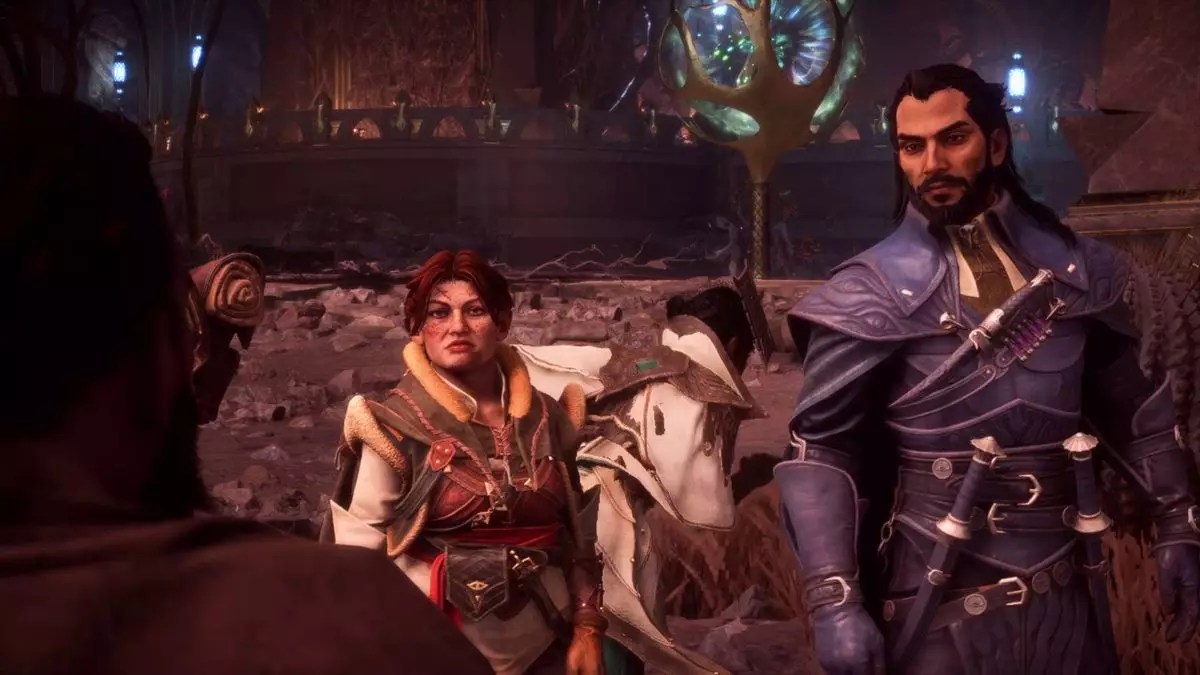In the robust storytelling universe of Dragon Age, players often find themselves confronted with choices that shape the narrative and the experience of their characters. A standout moment in Dragon Age Veilguard comes when players must make a critical decision between two cities: Minrathous and Treviso. This choice is thrust upon the player unexpectedly, adding to the weight of the decision, as both cities face the imminent threat of Blight Dragons under Ghilan’nain’s control. The lack of forewarning intensifies the moral and strategic implications that accompany this pivotal moment.
Both cities hold significance, not just in their historical richness but also in the interconnected relationships with various factions and companions. When forced to choose a city to save, players must grapple with the understanding that either route they take will yield consequences that ripple throughout the entire game, altering side quests, companion relationships, and even the player’s standing with specific factions.
Navigating the consequences of your actions can feel akin to walking a tightrope, particularly in regard to the companions associated with Minrathous and Treviso. Each option presents an opportunity to fortify relationships with certain allies while simultaneously jeopardizing others. Choosing to defend Minrathous, for instance, sweetens the bond with Lucanis, while simultaneously inciting the ire of Neve and jeopardizing the Shadow Dragons’ position. Conversely, aiding Treviso does bolster your standing with Neve but puts the Antivan Crows at risk.
These relationships are both a highlight of the Dragon Age series and a source of frustration for players who wish to maintain harmony amongst their companions. The dynamic between them adds an additional layer of complexity, as it is not just about the immediate outcomes but also how these relationships evolve through the narrative. The prospect of romance, too, hangs in the balance, particularly for those players hoping to pursue Lucanis post-encounter, only to discover that fate might not be as kind to them should they choose to save Minrathous.
The profound consequences of your choice extend beyond just interpersonal relationships; failed side quests and the death of pivotal faction merchants plague the city you abandon. An immediate sense of loss washes over players as they realize that the neglected city will not only face decay but will also unlock new side quests that arise from their downfall. The engaging world of Dragon Age Veilguard thus lays bare the stark reality of choices: every action begets consequences, and the narrative adapts dynamically to reflect the outcomes of the player’s decisions.
It is essential to note how the aftermath unfolds for each city. If players prioritize Minrathous, for instance, they stave off further harm to its citizens while simultaneously ensuring the Venatori are thwarted. However, that means Treviso succumbs to the chaos, and the blight takes its harsh toll on both its citizens and the story’s structure. A similar parallel exists should players choose Treviso, preserving the safety of its residents but leaving Minrathous vulnerable to blight and its repercussions. This duality renders the decision not merely one of preference but one that becomes a heavy moral quandary.
Navigating the Repercussions
Should the decision made turn out to be less than satisfying, players have the option to revisit earlier saves, albeit at the cost of losing out on the organic progression of the narrative as the stakes shift and side quests vanish. This mechanic invites a participatory experience where exploration and contemplation govern the flow of the game. The interplay between different timelines enables players to consider the far-reaching implications of their choices, thereby cultivating a vibrant gaming experience.
However, the design of this choice could space players between a rock and a hard place. On one hand, there is a desire to explore each city’s narrative arc fully, yet the consequences of switching outcomes can make it tempting to revert to previous saves. Players find themselves ensnared in a conundrum, questioning whether they prefer the satisfaction of completing ambiguous side quests with a specific city over potentially sacrificing long-term friendships with companions they have nurtured throughout the game.
Ultimately, the choice between assisting Minrathous or Treviso serves as a microcosm of the broader themes present within the Dragon Age universe—sacrifice, loyalty, and moral ramifications of personal choices. Within its narrative framework, Dragon Age Veilguard crafts a nuanced portrayal of the consequences tied to the player’s decisions, with no easy answer in sight. As players navigate the unfolding drama, they are not just shaping the fate of two cities but also forging their journey through moral ambiguity and complex relationships in an enthralling fantasy realm.


Leave a Reply